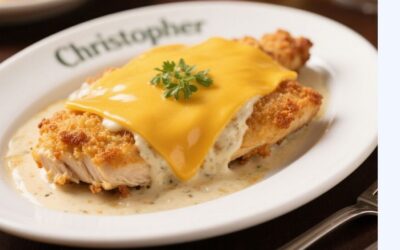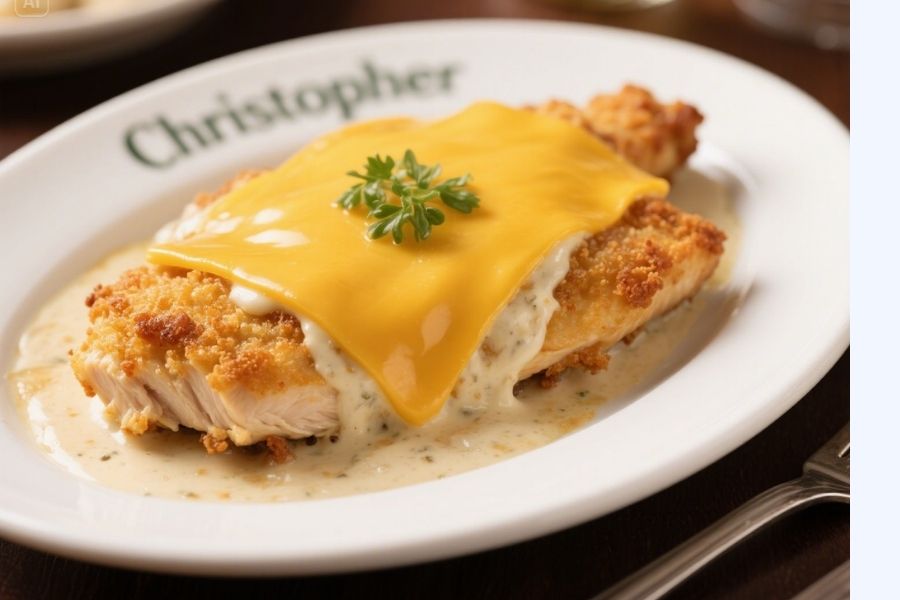Few dishes capture the essence of comfort food quite like Chicken Christopher. This golden, crispy creation has been gracing dinner tables and restaurant menus for decades, yet many home cooks remain unfamiliar with its rich history and surprisingly simple preparation methods. Named after its creator, this dish combines tender chicken breast with a luscious cream sauce and perfectly melted cheese, creating a meal that’s both elegant enough for special occasions and comforting enough for weeknight dinners.
Chicken Christopher represents more than just another chicken recipe—it’s a testament to how classic cooking techniques can transform simple ingredients into something extraordinary. The dish typically features flattened chicken breast, coated in seasoned breadcrumbs, pan-fried to golden perfection, then topped with ham, cheese, and a creamy sauce that brings all the flavors together in harmonious unity.
Understanding the origins, mastering the technique, and exploring variations of this beloved dish will elevate your cooking repertoire while providing you with a reliable crowd-pleaser that never goes out of style. Whether you’re planning a romantic dinner for two or preparing a family feast, Chicken Christopher delivers the perfect balance of sophistication and comfort that makes any meal memorable.
The Rich History Behind Chicken Christopher
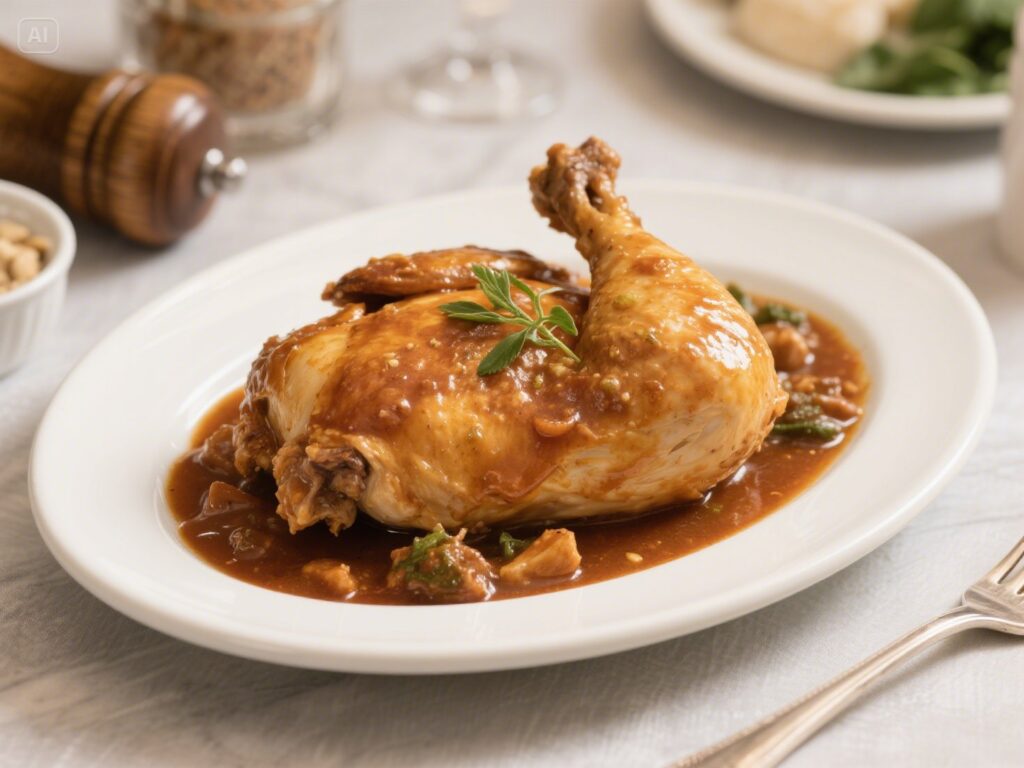
The exact origins of Chicken Christopher remain somewhat mysterious, with several culinary historians offering different theories about its creation. Most food experts agree that the dish emerged during the mid-20th century, when American cuisine was heavily influenced by European cooking techniques, particularly French culinary methods that emphasized rich sauces and layered flavors.
One popular theory suggests that Chicken Christopher was first created in upscale hotel restaurants during the 1950s, when chefs were experimenting with ways to elevate simple chicken dishes for sophisticated diners. The combination of Swiss cheese, ham, and cream sauce reflects the continental European influences that were popular in fine dining establishments of that era.
Another school of thought traces the dish’s origins to Italian-American kitchens, where cooks were already familiar with techniques like pounding meat thin and layering ingredients to create complex flavors. The name “Christopher” might have been chosen to honor a particular chef or restaurant owner, though the specific individual remains unknown to culinary historians.
Regardless of its exact origins, Chicken Christopher gained popularity throughout American restaurants during the 1960s and 1970s, becoming a staple on menus from coast to coast. The dish’s appeal lies in its ability to transform ordinary chicken breast into something that feels luxurious and special, making it perfect for both everyday dining and celebratory meals.
Essential Ingredients for Perfect Chicken Christopher

Creating authentic Chicken Christopher requires careful attention to ingredient selection, as each component plays a crucial role in developing the dish’s signature flavors and textures. The foundation begins with high-quality chicken breasts, preferably organic or free-range, which provide better flavor and texture than conventional alternatives.
The chicken preparation involves pounding the breasts to an even thickness, typically around half an inch, which ensures uniform cooking and creates the tender texture that defines this dish. This technique also increases the surface area, allowing seasonings and coatings to adhere more effectively while reducing cooking time.
For the coating, seasoned breadcrumbs form the crispy exterior that contrasts beautifully with the tender meat inside. Many recipes call for a combination of fine and coarse breadcrumbs, mixed with Italian seasoning, garlic powder, salt, and freshly ground black pepper. Some variations incorporate grated Parmesan cheese into the breadcrumb mixture for additional flavor depth.
The ham component traditionally uses thinly sliced deli ham, though prosciutto or Canadian bacon can provide interesting flavor variations. Swiss cheese remains the classic choice, offering a mild, nutty flavor that complements rather than overwhelms the other ingredients. However, Gruyère, provolone, or even fontina can work well depending on your flavor preferences.
The cream sauce typically combines heavy cream, white wine, chicken broth, and seasonings; however, some recipes incorporate mushrooms, shallots, or fresh herbs to add additional complexity. The key lies in achieving the right consistency—thick enough to coat the chicken without being overly heavy.
Step-by-Step Preparation Techniques

Mastering Chicken Christopher requires attention to timing and technique, but the process itself remains straightforward once you understand the basic steps. Begin by preheating your oven to 375°F and preparing all ingredients before starting the cooking process, as the dish comes together relatively quickly once you begin.
Start by pounding the chicken breasts between sheets of plastic wrap or parchment paper, using a meat mallet or rolling pin to achieve uniform thickness. Season both sides generously with salt and pepper, then let the chicken rest for 10-15 minutes to allow the seasonings to penetrate the meat.
Create an assembly line with three shallow dishes: one containing flour seasoned with salt and pepper, another with beaten eggs mixed with a tablespoon of water, and the third filled with seasoned breadcrumbs. Dredge each chicken breast first in flour, shaking off excess, then dip in the egg mixture, and finally coat thoroughly with breadcrumbs, pressing gently to ensure good adhesion.
Heat a large oven-safe skillet over medium-high heat with enough oil to coat the bottom. Cook the breaded chicken breasts for 3-4 minutes per side, until golden brown. Be careful not to move them too soon, as this can cause the coating to stick to the pan.
Once both sides are golden, remove the chicken temporarily and prepare the sauce in the same pan. Add butter, then flour to create a light roux, cooking for about a minute before gradually whisking in the wine, cream, and broth—season with salt, pepper, and any additional herbs you prefer.
Return the chicken to the pan, top each piece with ham and cheese, then transfer it to the preheated oven for 15-20 minutes, until the chicken reaches an internal temperature of 165°F and the cheese has melted completely.
Creative Variations and Modern Twists

Contemporary chefs have embraced Chicken Christopher’s versatility, creating numerous variations that respect the original while introducing exciting new flavor profiles. These adaptations demonstrate how classic techniques can evolve to meet modern tastes and dietary preferences.
Mediterranean variations incorporate sun-dried tomatoes, fresh basil, and mozzarella cheese, while the sauce might include white wine, garlic, and olive oil for a lighter, more herbaceous profile. This version pairs beautifully with roasted vegetables and provides a fresher take on the traditional recipe.
Mexican-inspired versions substitute pepper jack cheese and add jalapeños or green chiles, while the sauce incorporates elements like lime juice, cilantro, and cumin. These bold flavors create an entirely different dining experience while maintaining the dish’s essential structure.
For those seeking lighter options, baked versions eliminate the pan-frying step, instead coating the chicken with cooking spray and baking at a higher temperature to achieve crispiness. The sauce can be lightened by using half-and-half instead of heavy cream or incorporating Greek yogurt for added protein and reduced calories.
Mushroom lovers often add sautéed mushrooms to the cream sauce, creating earthier flavors that complement the ham and cheese beautifully. Wild mushrooms, such as shiitake or cremini, work exceptionally well, adding both flavor and textural interest to the finished dish.
Some modern interpretations stuff the pounded chicken with the ham and cheese before breading, creating a roulade-style presentation that looks impressive when sliced. This technique requires securing the rolls with toothpicks during cooking, but makes an elegant presentation perfect for entertaining.
Wine Pairings and Serving Suggestions
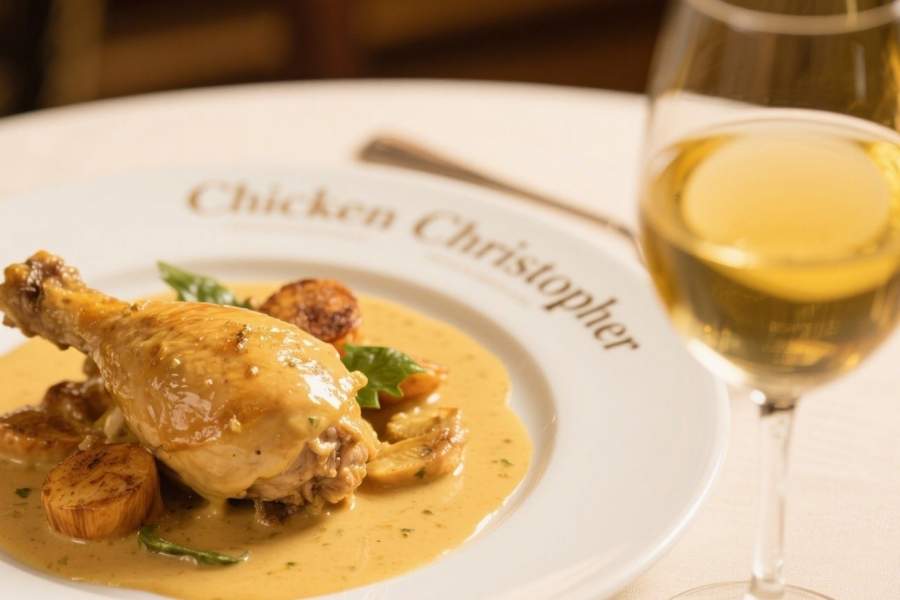
Chicken Christopher’s rich, creamy flavors pair beautifully with wines that can either complement or contrast with the dish’s decadent nature. Classic white wines, such as Chardonnay, particularly those with some oak aging, offer sufficient body and richness to pair well with the cream sauce while complementing the dish’s luxurious character.
Pinot Grigio or Sauvignon Blanc offer lighter alternatives that can cut through the richness without overwhelming the delicate flavors of the chicken. These crisp whites provide palate-cleansing acidity, preventing the meal from feeling too heavy.
For red wine enthusiasts, light to medium-bodied options are generally preferred. Pinot Noir’s bright acidity and subtle fruit flavors complement the ham component while not overpowering the cream sauce. Beaujolais or lighter Merlot can also work well, particularly when the dish incorporates mushrooms or herbs.
Sparkling wines deserve special consideration, as their effervescence and acidity provide an excellent contrast to the rich, creamy textures of other wines. Champagne, Prosecco, or American sparkling wines all work beautifully, making the meal feel more celebratory.
Side dishes should balance the richness of the main course. Simple roasted or steamed vegetables, such as asparagus, green beans, or broccoli, provide color, nutrition, and textural contrast. Rice pilaf, wild rice, or roasted potatoes can serve as starch components that absorb the delicious sauce without competing for attention.
Fresh salads with vinaigrette dressings help cleanse the palate between bites, while crusty bread allows diners to enjoy every drop of the flavorful cream sauce. The key lies in selecting accompaniments that enhance rather than overwhelm the star of the show.
Nutritional Considerations and Healthier Alternatives
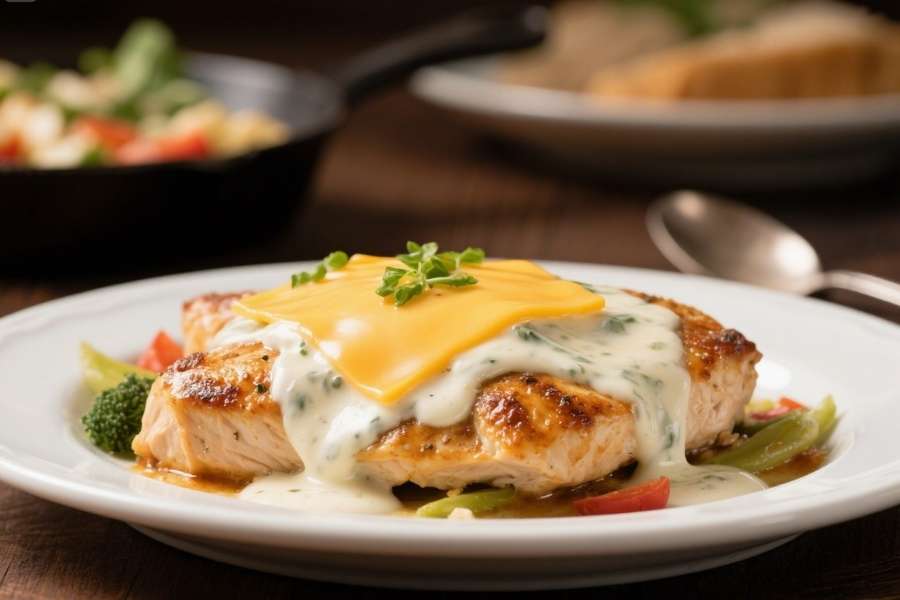
While Chicken Christopher remains an indulgent dish, understanding its nutritional profile and exploring healthier preparation methods can help you enjoy it more frequently without compromising your dietary goals. A typical serving contains approximately 400-500 calories, with significant protein content from the chicken and moderate amounts of fat from the cheese and cream sauce.
The protein content makes this dish quite satisfying, often requiring smaller portions than you might expect. Chicken breast provides all essential amino acids while remaining relatively lean compared to other protein sources. The combination of protein and fat also helps create a feeling of lasting satiety.
For those monitoring their sodium intake, be mindful of the ham and cheese components, which contribute the majority of the dish’s sodium content. Low-sodium ham alternatives or reducing the quantity can help address this concern without significantly impacting flavor.
Healthier preparation methods include using cooking spray instead of oil for browning, substituting Greek yogurt for some of the heavy cream, or using reduced-fat cheese options. These modifications can reduce calories by 100-150 per serving while maintaining much of the original’s appeal.
Portion control becomes easier when serving Chicken Christopher alongside substantial vegetable sides. The rich flavors satisfy cravings with smaller amounts, making it possible to enjoy this comfort food classic as part of a balanced diet.
Gluten-free versions substitute almond flour or gluten-free breadcrumbs for the coating. At the same time, dairy-free alternatives use coconut cream and nutritional yeast to approximate the original’s richness and flavor profile.
Mastering the Perfect Cream Sauce

The cream sauce often determines whether Chicken Christopher succeeds or fails, making sauce technique crucial for home cooks seeking restaurant-quality results. Understanding proper sauce consistency, flavor balance, and timing ensures success every time you prepare this dish.
Temperature control prevents the most common sauce problems. Keep heat at medium or medium-low throughout the process, as high heat can cause cream to curdle or separate. If your sauce begins to look grainy, remove it from the heat immediately and whisk in a tablespoon of cold cream to help restore smoothness.
Proper thickening technique involves creating a light roux with butter and flour before adding liquids. This prevents lumps and provides better thickening power than simply adding cream to the pan. Cook the roux for at least one minute to eliminate the raw flour taste, but avoid browning it if you want to maintain the sauce’s light color.
When adding liquids, do so gradually while whisking constantly. Start with the wine, if using, and allow it to reduce slightly before adding the cream and broth. This technique builds layers of flavor while preventing separation or curdling, ensuring a smooth texture.
Seasoning requires careful balance, as the ham and cheese add saltiness while the cream provides richness. Taste frequently and adjust with salt, pepper, and herbs as needed. Fresh herbs, such as thyme or parsley, added at the end brighten the overall flavor profile.
If your sauce becomes too thick, thin it with additional broth or cream. If it’s too thin, continue cooking to reduce the liquid, or whisk in a small amount of flour mixed with cold water to help thicken it without creating lumps.
Bringing Comfort Food Excellence to Your Table
Chicken Christopher represents the best of American comfort food—taking simple, accessible ingredients and elevating them through proper technique and thoughtful flavor combinations. This dish proves that home cooking can achieve restaurant-quality results when you understand the fundamentals and pay attention to details.
The versatility of Chicken Christopher makes it suitable for a variety of occasions, from weeknight family dinners to elegant entertaining. Its make-ahead potential allows busy cooks to prepare components in advance, while its crowd-pleasing nature ensures success when serving guests with different tastes and preferences.
Success with this dish comes from mastering each component—properly pounding and seasoning the chicken, creating the perfect coating, achieving golden browning, and preparing a silky cream sauce. Once you understand these techniques, numerous variations become possible, enabling you to tailor the dish to your preferences and dietary needs.
Whether you stick to the traditional preparation or experiment with modern variations, Chicken Christopher offers a satisfying cooking experience that rewards attention to detail with exceptional flavor. Start with the classic version to understand the fundamentals, then let your creativity guide you toward your signature interpretation of this timeless comfort food classic.










